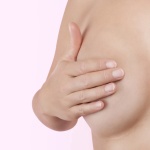Mother Nature’s most potent healing herbs are already on most spice racks or growing right outside the front door.
Herbs have been respected for their healing properties for thousands of years. Traditional healers have used their medicinal properties with great success. Now solid science backs them up.
Pharmaceutical companies have extracted active ingredients from herbs as the basis for many medications commonly used today, including the potent pain reliever codeine, derived from the herb Papaver somniferum, the head-clearing antihistamines ephedrine and pseudoephedrine, derived from the plant Ephedra sinica and even taxol, the chemotherapy drug commonly used to treat several types of cancer, including breast cancer, derived from the plant source Taxus brevifolia, according to Milliam County, TX-based Naturopathic doctor and herbalist Leslie Taylor, author of The Healing Power of Rainforest Herbs.
Some herbs could be termed “superherbs”—the ones that provide a wide array of medical, according to Rosemary Gladstar, founder of the California School of Herbal Studies in Sonoma, CA, and author of numerous books including Herbal Remedies for Vibrant Health.
Two “superherbs” are widely considered weeds and a nuisance in lawns, says Gladstar, who lives in Barre, VT.
Plantain (Plantago major): This plant, commonly regarded as a weed, is probably growing in your driveway. It has strong liver protective and anti-inflammatory effects that may reduce the risk of a wide variety of chronic diseases, according to a 2009 study published in the Indian Journal of Pharmacology.
At least one study, published in the journal Planta Medica in 2003, suggests that plantain has immune system-enhancing effects that can fight cancer and infectious diseases.
It’s commonly used externally for poultices, open wounds, blood poisoning, bee stings and a variety of other skin irritations.
“Plantain is considered a survival herb because of its high nutritional value,” says Gladstar.
A 2013 study published in the Journal of Agriculture and Food Chemistry confirms that plantain is highly nutritious, an excellent source of alpha-tocopherol, a natural form of vitamin E, beta carotene that can be used in salads for those who can tolerate the bitter taste.
Dandelion (Taraxacum officinal): This “nuisance’ weed, like plantain, can push its way through cracks in concrete, but it is also one of the most powerful medicinal herbs known.
“Dandelion is revered whether you travel, except in the U.S., where it is considered noxious,” says Gladstar.
Maybe it’s time to reconsider our obsession with eradicating dandelions.
Dandelion root is an effective treatment against several types of cancer, including often-fatal pancreatic and colorectal cancers and melanoma, even those that have proven resistant to chemotherapy and other conventional medical treatments, according to several studies from the University of Windsor (England)
Traditionally used as part of a detoxification diet, an important Korean study shows dandelion leaf reduces the effects of obesity-related liver disease and lowers cholesterol, blood triglycerides and blood sugar in animals.
It’s also used traditionally to treat digestive ailments, to reduce swelling and inflammation and to stop bleeding, whether internally or externally.
And these two are probably sitting in your spice rack right now:
Turmeric (Curcuma Longa): Tumeric gives curry powder its vibrant yellow color.
“Curcumin, turmeric’s most important active, ingredient, is a wealth of health, backed by a substantial scientific evidence that upholds its vast health benefits,” says Jan McBarron, M.D., N.D., author of Curcumin: The 21st Century Cure and host, with her husband of the popular radio show, Duke and the Doctor.
Among the most important are several human and animal studies that show curcumin can be an effective treatment for Alzheimer’s disease, not only as a preventive, but to slow or even stop the progress of the dread disease. An Australian study shows that curcumin helps chelate heavy metals that may be an underlying cause of the memory-robbing disease and scientists at UCLA found that curcumin help dissolved the plaques and tangles of brain material that is characteristic of Alzheimer’s.
That’s not all. Curcumin has been shown to be an anti-depressant as effective as some prescription medications; it’s been shown effective against heart disease, some types of cancer and diabetes, says Dr. McBarron, who practices in Columbus, GA.
Ginger (Zingiber officinale): Primarily used for its considerable anti-inflammatory properties, ginger makes a delicious and healing tea and an enticing spice in a variety of dishes.
This herbal powerhouse has at least 477 individual active ingredients, according to Beyond Aspirin by Thomas M. Newmark and Paul Schulick.
Research from the University of Miami confirms ginger’s effectiveness against knee pain.
And a large body of research confirms ginger’s effectiveness against a variety of digestive problems, including nausea from morning sickness and as a result of chemotherapy.
“Ginger is a favorite of mine for its many benefits. It’s a great herb to treat any type of bacterial, fungal of viral infection and it tastes great!” says Linda Mix, Rogersville, TN-based author of Herbs for Life!
Yes, some of these herbs may be available in the front lawn or the tropicals like turmeric and ginger are easily grown in pots, all the herbs we’ve discussed are also easily available in supplement form.







